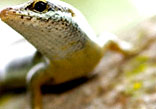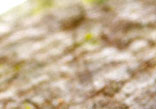| Home | Contact Us | Reservation |
     |
| Choose Your Adventure | ||
| Caving Tours In India Luxury Adventure Tours Skiing in India Scuba Diving India India Trekking Tours Trekking in Himachal India Cycling Tours Trekking in Ladakh Trekking in Kumaon Trekking in Garhwal India Motorbike Safari India Wildlife Safari India Fishing Tours India Jeep Safaris India Family Adventures India Student Adventures India Birding Tours India Reptile Tours India Tribal Tours India Camel Safari India Horse Back Safari India Elephant Safari India River Rafting Adventure Photo Gallery India Short Adventure Kailash Mansarovar Yatra Ganges Sailing Trip |
||
Family Adventures |
||
|
||
Explore Cycling Tours |
||
|
||
 |
||
 |
A E Travel Ptivate Limited - » India Reptile Tours
The reptile species is well represented in the country of India. Infact, the subcontinent is home to as many as 447 species of reptiles (census 1994). One can find crocodile inhabiting the rivers, swamps and lakes of India. Then, there is its cousin, known as gharial, which is found in a number of Indian rivers, including Ganges and Brahmaputra. Also included in the list of Indian reptiles are turtles, tortoise and chameleons. The reptiles of India constitute 6.2 percent of the total population of reptiles in India. Out of these, 26 species have been listed as threatened in the IUCN Red List of Threatened Animals (IUCN 2006).
Crocodiles inhabit the country's rivers, swamps, and lakes. The estuarine crocodile (Crocodilus porosus) - once attaining a maximum length of 30 feet (9 metres), though specimens exceeding 20 feet (6 metres) are now rare—usually lives on the fish, birds, and crabs of muddy deltaic regions. The long-snouted gavial, or gharial (Gavialis gangeticus), a species similar to the crocodile, is endemic to northern India; it is found in a number of large rivers, including the Ganges and Brahmaputra and their tributaries. Of the nearly 400 species of snakes, one-fifth are poisonous. Kraits and cobras are particularly widespread poisonous species. King cobras often grow to at least 12 feet (3.6 metres) long. Of some 2,000 species of fish in India, about one-fifth live in fresh water. Common edible freshwater fish include catfish and several members of the carp family, notably the mahseer, which grows up to 6.5 feet (2 metres) and 200 pounds (90 kg). Sharks are found in India's coastal waters and sometimes travel inland through major estuaries. Commercially valuable marine species include shrimps, prawns, crabs, lobsters, pearl oysters, and conchs.
Crocodiles inhabit the country's rivers, swamps, and lakes. The estuarine crocodile (Crocodilus porosus) - once attaining a maximum length of 30 feet (9 metres), though specimens exceeding 20 feet (6 metres) are now rare—usually lives on the fish, birds, and crabs of muddy deltaic regions. The long-snouted gavial, or gharial (Gavialis gangeticus), a species similar to the crocodile, is endemic to northern India; it is found in a number of large rivers, including the Ganges and Brahmaputra and their tributaries. Of the nearly 400 species of snakes, one-fifth are poisonous. Kraits and cobras are particularly widespread poisonous species. King cobras often grow to at least 12 feet (3.6 metres) long. Of some 2,000 species of fish in India, about one-fifth live in fresh water. Common edible freshwater fish include catfish and several members of the carp family, notably the mahseer, which grows up to 6.5 feet (2 metres) and 200 pounds (90 kg). Sharks are found in India's coastal waters and sometimes travel inland through major estuaries. Commercially valuable marine species include shrimps, prawns, crabs, lobsters, pearl oysters, and conchs.
Copyright
©AeTravel.com All Right Reserved (Copying
of Text & Picture from this site is Strictly Prohibited).
Site Developed & Maintained by Ushainformatique.com & ElectronWeb.com |






